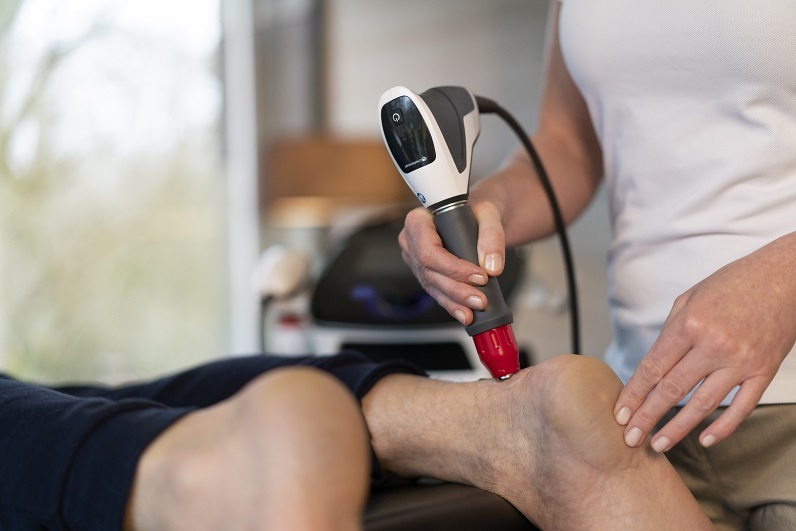
Oct 25, 2023
Are you tired of living in constant agony because of plantar fasciitis or heel pain? Is the quest to find a suitable solution leading you down a never-ending spiral of disappointment? Well, you’re not alone. Plantar fasciitis and heel pain can be incredibly debilitating, affecting your everyday life, from walking to working. But don’t lose hope; there’s a cutting-edge treatment option that could be your game-changer: Shockwave Therapy.
In this article, we will delve into the benefits of Shockwave Therapy for Plantar Fasciitis and Heel Pain, and discuss how Physica Health, serving Bagshot and Camberley areas, can help you get back on your feet.
Understanding Plantar Fasciitis and Heel Pain
Before we dive into the details of Shockwave Therapy, let’s briefly understand the two common culprits – Plantar Fasciitis and Heel Pain.
Plantar Fasciitis is a painful condition that results from inflammation in the plantar fascia, the thick band of tissue that runs across the bottom of your foot, connecting your heel bone to your toes. This inflammation often leads to stabbing pain in the heel, typically at its worst in the morning or after prolonged periods of rest.
Heel Pain, on the other hand, is a broader term that encompasses various conditions causing discomfort or pain in the heel, including Plantar Fasciitis.
What is Shockwave Therapy?
Shockwave Therapy, also known as Extracorporeal Shock Wave Therapy (ESWT), is a non-invasive treatment method that has gained popularity for its effectiveness in treating various musculoskeletal conditions, including Plantar Fasciitis and Heel Pain. It uses high-energy acoustic waves to stimulate the body’s natural healing processes.

The Benefits of Shockwave Therapy
- Pain Relief: Shockwave Therapy targets the source of pain, promoting quicker healing and pain relief without the need for invasive procedures or medication.
- Non-Invasive: Unlike surgery, Shockwave Therapy is non-invasive, meaning it doesn’t require incisions or anaesthesia, reducing the risks and recovery time associated with surgical procedures.
- Improved Blood Flow: Shockwave Therapy helps improve blood circulation to the affected area, facilitating faster healing and tissue regeneration.
- Short Treatment Duration: Each session typically lasts for 10-15 minutes, making it a quick and convenient option for busy individuals.
- High Success Rate: Many patients experience significant relief and improvement in their condition after just a few sessions.
Shockwave Therapy at Physica Health in Bagshot and Camberley
If you’re searching for “Shockwave Therapy Plantar Fasciitis near me” and you happen to be in the Bagshot or Camberley areas, you’re in luck. Physica Health offers state-of-the-art Shockwave Therapy services designed to provide you with the relief you need.
Why Choose Physica Health for Shockwave Therapy?
- Experienced Professionals: Our team of skilled Physiotherapists are well-versed in administering Shockwave Therapy for Plantar Fasciitis and Heel Pain.
- Personalised Treatment Plans: At Physica Health, we recognise that every patient is unique. We create personalised treatment plans tailored to your specific needs, ensuring the best possible outcome.
- Cutting-Edge Equipment: We use the latest Shockwave Therapy equipment to provide you with the most effective and advanced treatment available.
- Convenient Locations: With clinics in both Bagshot and Camberley, we are accessible to patients in these areas, making it easy to receive the treatment you need.
The Road to Recovery Starts Here
Living with Plantar Fasciitis or Heel Pain can be challenging, but Shockwave Therapy can offer the relief you’ve been searching for. If you’re in the Bagshot or Camberley area, Physica Health is your trusted partner in this journey towards a pain-free life. Don’t let your discomfort hold you back; take the first step towards recovery today.
In conclusion, Shockwave Therapy for Plantar Fasciitis and Heel Pain is a game-changing treatment that’s gaining popularity for its effectiveness. If you’re in the Bagshot or Camberley areas and searching for “Shockwave Therapy Plantar Fasciitis near me,” Physica Health is your go-to destination. Say goodbye to pain and hello to a pain-free, active life with Shockwave Therapy.
To Book in for Shockwave Therapy at Physica Health, just call 01276916346, email info@physicahealth.co.uk or book online at www.physicahealth.co.uk
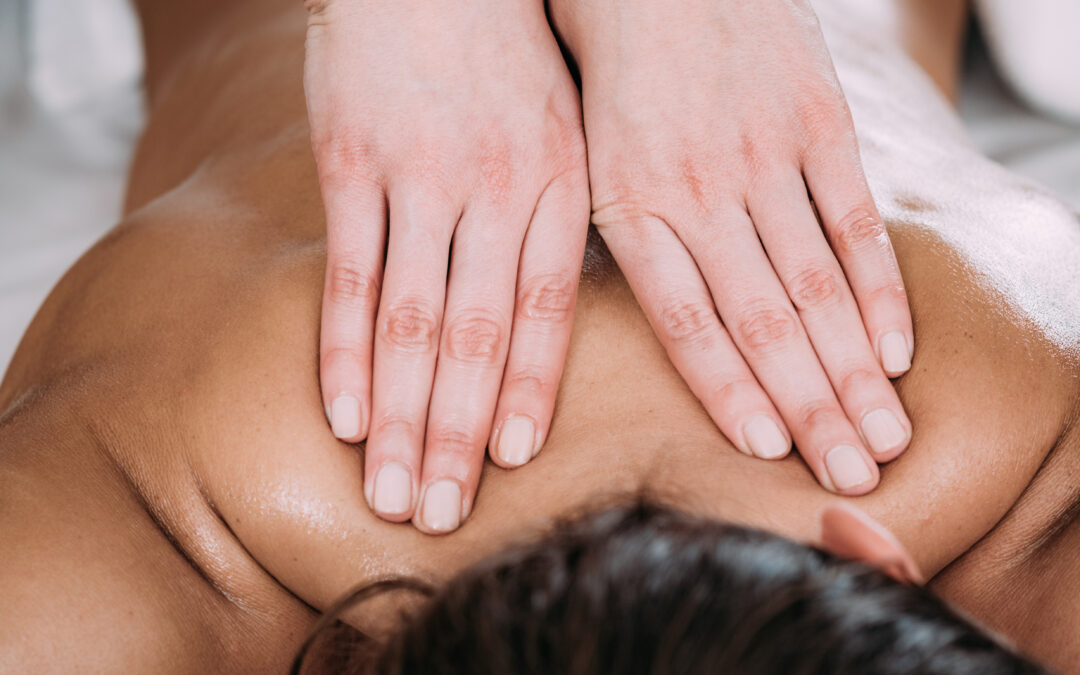
Oct 23, 2023
When it comes to massage therapy, you’re likely familiar with the relaxing experience of a Swedish massage. But for athletes and active individuals, a sports massage offers unique advantages tailored to their needs. In this article, we’ll explore the top five benefits of Sports massage compared to Swedish massage. If you’re looking for Sports massage in Bagshot to address specific issues such as back pain, neck pain, or recovery, this information is just what you need.
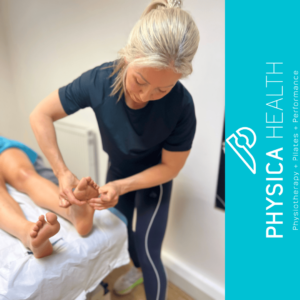
- Targeted Muscle Relief:Sports Massage: Sports massage is designed to target specific muscle groups and address issues related to sports or exercise. It focuses on stretching and deep tissue techniques, aiding in the release of muscle tension, knots, and adhesions. For athletes, this can lead to improved flexibility and enhanced performance.
Swedish Massage: While Swedish massage provides relaxation and stress relief, it tends to offer a more generalised approach, covering the entire body. It may not be as effective for athletes seeking targeted muscle relief.
- Injury Prevention:Sports Massage: One of the primary goals of sports massage is to prevent injuries. It helps identify muscle imbalances, tightness, and potential trouble areas. Regular sports massage sessions can help athletes stay in peak condition, reducing the risk of injuries during training or competitions.
Swedish Massage: Swedish massage is less focused on injury prevention and more on relaxation and overall well-being.
- Enhanced Circulation:Sports Massage: Sports massage promotes increased blood flow to muscles, which can speed up the healing process and reduce muscle soreness. This is particularly beneficial for those recovering from intense workouts or sports-related activities.
Swedish Massage: While Swedish massage can also improve circulation, it may not be as effective in targeting specific areas that need increased blood flow.
- Post-Workout Recovery:Sports Massage: Athletes often turn to sports massage for quicker recovery after strenuous exercise. It helps reduce muscle soreness and inflammation, allowing individuals to get back to their training routines sooner.
Swedish Massage: Swedish massage is excellent for relaxation but may not provide the same level of post-workout recovery benefits.
- Customised Treatment:Sports Massage: Sports massage is adaptable to individual needs. Whether you’re looking to alleviate back pain, neck pain, or any other specific issue, sports massage can be tailored to address these concerns effectively. Our sports massage therapists at Physica Health work closely with our Physiotherapists to ensure any existing injuries are addressed and considered as part of their sports massage treatment.
Swedish Massage: Swedish massage typically follows a set routine, offering limited customisation for individuals with distinct muscle-related problems.
Conclusion:
While Swedish massage is a fantastic option for relaxation and stress relief, sports massage shines when it comes to addressing the needs of athletes and active individuals. At Physica Health in Bagshot, where sports massage is readily available, you can experience the benefits of targeted muscle relief, injury prevention, enhanced circulation, post-workout recovery, and personalised treatment for issues like back pain and neck pain.
If you’re searching for “sports massage near Bagshot” to improve your athletic performance or alleviate specific muscle-related concerns, a sports massage at Physica Health may be the ideal solution. Don’t hesitate to explore the world of sports massage and experience the difference for yourself. Your body will thank you for it.
You can find out more about our Sports Massage Service here
To book, just call 01276916346 or email info@physicahealth.co.uk
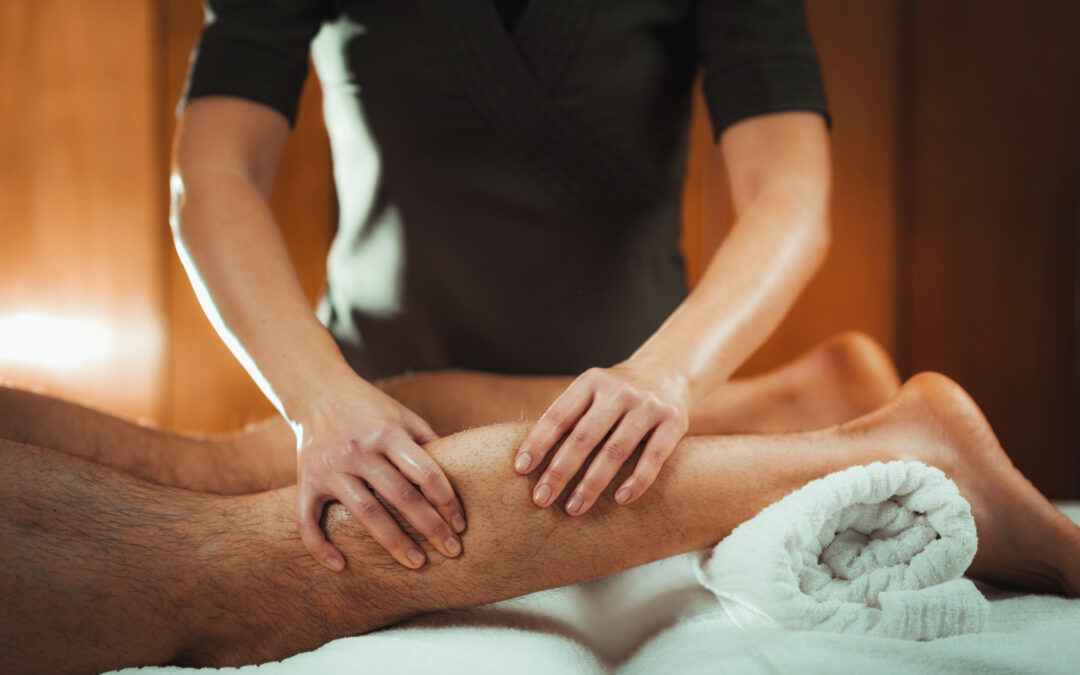
Oct 19, 2023
Are you an athlete or fitness enthusiast striving to optimise your performance, manage persistent neck and back pain, or simply seeking relaxation and rejuvenation? Physica Health, located in the heart of Bagshot, offers a solution tailored to your needs—sports massage. We specialise in providing top-quality sports massages that target your muscle tension, ease discomfort, and elevate your physical capabilities.
In this article, we’ll delve into the world of sports massage, the benefits it brings, and how Physica Health can be your trusted partner in achieving your fitness and wellness goals. Whether you’re an athlete preparing for a competition, someone battling nagging neck or back pain, or just seeking relaxation, our services are designed to meet your unique requirements.
The Power of Sports Massage
What Is Sports Massage?
Sports massage is a specialised form of massage therapy designed to enhance an athlete’s performance, reduce the risk of injury, and expedite recovery. It’s not just for professional athletes; it’s for anyone who leads an active lifestyle or experiences muscle-related discomfort.
Addressing Back and Neck Pain
One common issue that sports massage effectively tackles is back and neck pain. Prolonged periods of physical activity or sedentary work can often lead to tension and discomfort in these areas. Our skilled therapists at Physica Health are trained to identify and address these issues with precision. They utilise various techniques, such as deep tissue massage, to release tight muscles and alleviate pain, enabling you to regain flexibility and comfort.
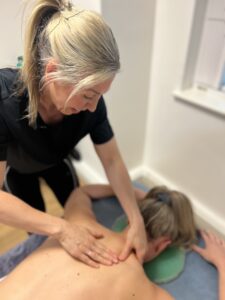
Elevate Your Performance
Are you an athlete looking to take your performance to the next level? Sports massage is a crucial component of any athlete’s training regimen. Regular sessions can improve muscle flexibility, reduce the risk of injuries, and enhance overall mobility. At Physica Health, our therapists can tailor the massage to focus on specific muscle groups and techniques to meet your performance goals.
Sports Massage Near Me
Convenience is key when seeking a sports massage. Located in Bagshot, Physica Health is your trusted choice for sports massage in the area. Our location, located on London Road in Bagshot, with ample parking, ensures that you can easily access the care and services you need without the hassle of traveling long distances.
Conclusion
If you’re looking for a top-notch sports massage experience that addresses back and neck pain, boosts your athletic performance, and is conveniently located near you, Physica Health is your ultimate destination. Our professional therapists are dedicated to helping you achieve your fitness and wellness goals.
Don’t let muscle tension, back, or neck pain hinder your lifestyle. Contact Physica Health today and discover how our sports massage services can transform your well-being.
Remember, it’s not just a massage; it’s a pathway to a better, more vibrant you.
To book your sports massage:
Call us on: 01276916346
Email us: info@physicahealth.co.uk
Or Book online at: https://physica-health.uk2.cliniko.com/bookings/

Sep 9, 2023
In the dynamic world of sports, athletes constantly push their bodies to the limits, facing the demands of rigorous training and competition. While seeking the expertise of a sports massage therapist such as ours at Physica Health in Bagshot, is crucial for comprehensive care, integrating DIY sports massage techniques into your self-care routine can offer valuable support between professional sessions. Here are some tips to help athletes effectively manage their muscle health.
- Foam Rolling for Enhanced Flexibility
A readily available tool for self-massage is the foam roller. This versatile equipment aids in myofascial release, promoting flexibility and alleviating muscle tightness. Concentrate on rolling over major muscle groups like the calves, quadriceps, and hamstrings. For those in Bagshot, finding a sports massage therapist nearby can complement these efforts, providing professional insights into your unique needs.
- Trigger Point Release with a Lacrosse Ball
For targeted relief of knots and trigger points, a lacrosse ball can be incredibly effective. Lie on the floor and position the ball under the area of discomfort, applying gentle pressure. Roll the ball around to identify and release tension in specific muscle knots. This technique is particularly beneficial for addressing back pain. Our sports massage therapist in Bagshot can advise further on how to use the lacrosse ball to aid your DIY massage efforts.
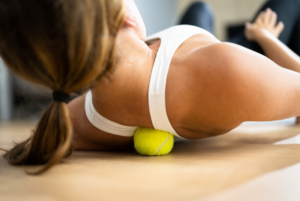
- Dynamic Stretching for Active Muscles
Dynamic stretching is an excellent way to enhance range of motion and prepare your muscles for activity. Incorporate dynamic stretches into your warm-up routine before workouts or training sessions. Focus on movements that replicate the actions of your sport, engaging the muscles you’ll use during the activity. This not only improves performance but also reduces the risk of injury—a valuable consideration and can aid sports massage for runners.
- Self-Massage Techniques for Back Pain
If back pain is a concern, a tennis ball can serve as a valuable tool. Place the tennis ball between your back and a wall, then move your body to roll the ball over tight areas. This straightforward technique helps release tension in the muscles of your upper and lower back, offering relief from discomfort. Sports massage for back pain can also be very effective.
- Utilise Sports Massage Tools for Targeted Relief
Investing in massage tools like handheld massagers or massage sticks can effectively target specific muscle groups. These tools can be especially useful in reaching areas challenging to access with manual techniques. While these tools can’t match the specificity of expert sports massage they can be a great help.
- Incorporate Essential Oils for Relaxation
Elevate your DIY sports massage experience by incorporating essential oils known for their relaxing properties. Lavender, peppermint, or eucalyptus oils can be mixed with a carrier oil and applied during self-massage. The calming aroma adds an extra layer of relaxation, promoting not only physical but also mental well-being. Our sports massage therapist in Bagshot will be happy to advise on these if you have any questions.
Conclusion
While nothing can replace the expertise of an expert sports massage therapist such as here at Physica Health Bagshot, integrating these DIY sports massage techniques into your routine can be a valuable component of your self-care regimen. Consistency is key, so aim to incorporate these practices regularly to support your body in its journey to peak performance. Remember to listen to your body and consult with a professional if you have persistent pain or concerns. Take charge of your muscle health and elevate your athletic performance with these simple yet effective self-care tips.
In the run up to the London Marathon we are hosting an Express Massage Week from 15-19th April
Enjoy a 30 minute sports massage for £38 (usually £45). Book Online HERE
Or Get in Touch: 01276 916346 Email: info@physicahealth.co.uk
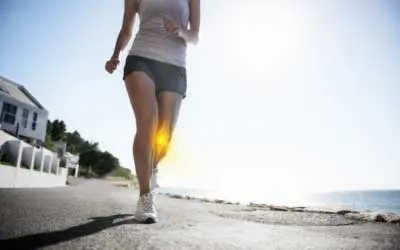
Aug 10, 2022
Do you suffer from persistent knee pain, especially in the front of your knee? You may be dealing with anterior knee pain, a common condition that can impact your daily life. Let’s dive into the potential causes and explore effective treatment options, including working with a knee pain physiotherapist for knee rehabilitation.
Causes of Anterior Knee Pain
Numerous factors have been linked to the development of anterior knee pain, also known as patellofemoral pain syndrome (PFPS). It’s important to note that while some have more concrete evidence than others, understanding these factors can help guide your treatment. Here are some key factors associated with anterior knee pain:
- Muscle Activation and Reflex Response: One important aspect is the activation and reflex response time of the vastus medialis (VM) in relation to the vastus lateralis (VL). Recent research has shown that individuals with PFPS may exhibit decreased electromyographic activity, small delays in muscle firing, or a combination of both. This can lead to abnormal patellar tracking and, subsequently, pain.
- Tightness in Muscles: Tightness in various leg muscles, including the gastrocnemius, hamstring, quadriceps, and iliotibial band, can also contribute to abnormal patellar tracking. These tight muscles can create biomechanical force vectors that result in lateral glide or other tracking issues, potentially causing knee pain.
- Quadriceps Strength: Weakness in the quadriceps, especially the vastus medialis compared to the vastus lateralis, has been identified as a potential factor in lateral patellar tracking.
- Hip Musculature Strength: Hip musculature plays a significant role in knee stability and patellar tracking. Weakness in the hip abductors and iliopsoas can lead to an anterior tilt of the pelvis and internal hip rotation, both of which can increase the Q angle and stress on the patellofemoral joint.
- Q Angle: A naturally large Q angle can lead to maltracking of the patella. This angle tends to be slightly higher in females, either due to differences in pelvis width or decreased height.
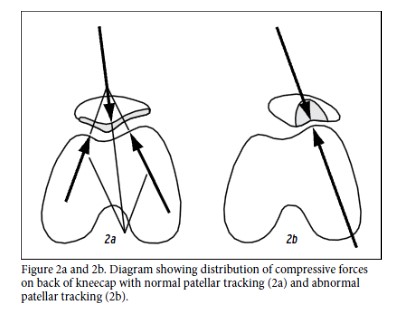
Effective Treatment for Knee Pain
If you’re dealing with anterior knee pain, it’s essential to explore effective treatment options. Working with a knee pain physiotherapist can be particularly beneficial. They can provide tailored knee rehabilitation strategies to address your specific condition. Here are some treatment approaches that can help:
- Muscle Strengthening: Our elite level Physiotherapists can guide you through exercises to strengthen the relevant muscles, such as the quadriceps, hip abductors, and iliopsoas, to improve knee stability.
- Sports Massage and Stretching: Targeted Sports Massage combined with stretching exercises for the gastrocnemius, hamstrings, quadriceps, and iliotibial band can alleviate tightness and reduce the potential for abnormal tracking.
- Patellar Taping: Taping techniques can be used to encourage proper patellar alignment during activities.
- Biomechanical Analysis: A knee pain physiotherapist can conduct a thorough biomechanical analysis to identify any contributing factors and develop a personalised treatment plan.
- Orthotic Support: In some cases, orthotic devices may be recommended to provide additional support and alleviate stress on the knee joint.
In conclusion, anterior knee pain can be a challenging condition, but with the right treatment, you can find relief and get back to enjoying an active lifestyle. If you’re experiencing knee pain, especially if it’s related to abnormal patellar tracking, consider consulting one of our expert knee pain physiotherapists at Physica Health in Bagshot for tailored knee rehabilitation and treatment for knee pain. Don’t let knee pain hold you back from the activities you love.
Book an appointment at Physica Health now to get on top of your knee pain. Call us on 01276916346 or Email info@physicahealth.co.uk
References:
Connelly et al 2009 Differences in patellofemoral contact mechanics associated with patellofemoral pain syndrome. Journal of Biomechanics. Volume 42, Issue 16, 2802-2807
Waryasz GR, McDermott AY 2008 Patellofemoral pain syndrome (PFPS): a systematic review of anatomy and potential risk factors. Dynamic Medicine.7:9:1-14
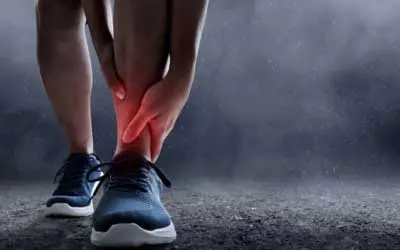
Aug 10, 2022
You may well have heard your Physiotherapist, Therapist or Doctor mention Inflammation when you have suffered an injury such as ankle sprain, knee ligament injury, back pain or even surgery but what is it? What is purpose of the inflammatory process and what does it mean for your injury? Read on to find out more…
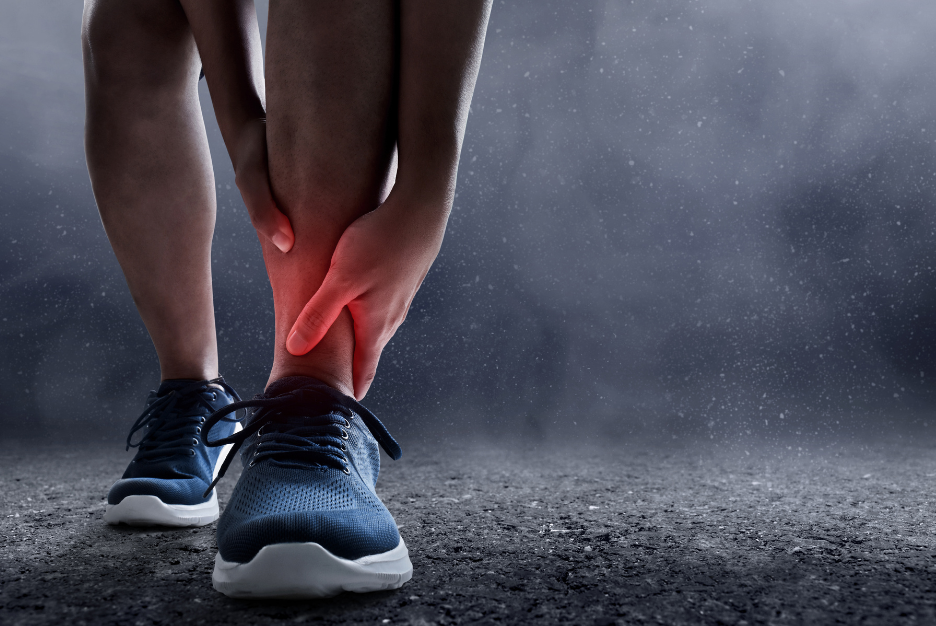
An inflammatory response is usually initiated in a soft tissue when it is exposed to an excessive load that it is not usually used to (Solomonow 2009). In the case of a ligament, this can be a stretch type load when a joint is stressed beyond its limits.
The inflammatory response can be broken down into various stages which may slightly overlap. Watson (2003) describes 4 stages: bleeding, inflammation, proliferation, and remodelling. Initially whether it be a wound on the skin or damage to a ligament, this may well last for a few hours or more depending on the severity of the injury. This along with the subsequent stages all aim to clear away debris or dead cells and lay down new collagen and scar tissue to heal and repair the injured area (Watson 2003).
The inflammatory phase is one of the most important phases in tissue healing and is one that there has been much research into how it can be controlled and even inhibited with interventions such as prolotherapeutic and steroid injections respectively (Hauser & Dolan 2011). This stage includes an initial vasoconstriction of the blood vessels followed by a prolonged vasodilation for the rest of the inflammatory phase in order to increase the flow of the necessary chemical mediators, proteins, growth factors and mast cells to the injured area (Watson 2003). Polymorphonucleocytes (PMN’s) other phagocytic cells act to clean away debris and dead tissue while also releasing lactic acid which acts to stimulate proliferation and the next stage of the process (Watson 2003).
The proliferation phase then involves fibroblasts and endothelial cells moving into the damaged area, proliferating and laying down granulation tissue which will eventually form mature scar tissue. Blood flow is also gradually restored by the budding and growth of new capillaries from those already existing around the area (Watson 2003). The initial fibres are laid down in random orientation and are predominantly made of weaker type III collagen. Although this will eventually be remodelled into the stronger type one type collagen, the injured tissue or ligament will never regain its full strength (Frank et al 1999).
As its name suggests, the remodelling phase involves the remodelling of the scar tissue by improving its orientation in line with stress improving its strength and organisation. The overall strength of the ligament or tissue is also enhanced by the absorption of the type III collagen fibres that are then replaced by the more fit for purpose type I fibres. This phase has been reported to start within 1-2 weeks of the initial injury and can continue for a year or more depending on the severity of the injury and what further stresses are placed upon it (Watson 2003).
Overall, while the initial phases such as bleeding, inflammation and proliferation run their course in a matter of weeks, the process of remodelling can continue for up to 2 years as the body continuously turns over and tries to improve the collagen makeup and tensile strength of the affected tissue.
If you have any questions or would like help with your injury, then don’t hesitate to get in touch at info@physicahealth.co.uk or book a consultation with us online at www.physicahealth.co.uk
References:
Frank CB, Hart DA, Shrive NG 1999 Molecular biology and biomechanics of normal and healing ligaments – a review. Osteoarthritis and Cartilage 7: 130-140
Hauser RA & Dolan EE 2011 Ligament Injury and Healing: An Overview of Current Clinical Concepts. Journal of Prolotherapy 3(4): 836-846
Solomonow M 2009 Ligaments: a source of work-related musculoskeletal disorders. Journal of Bodywork and Movement Therapies 13: 136-154
Watson T 2003 Soft Tissue Healing. In Touch 104:2-9












